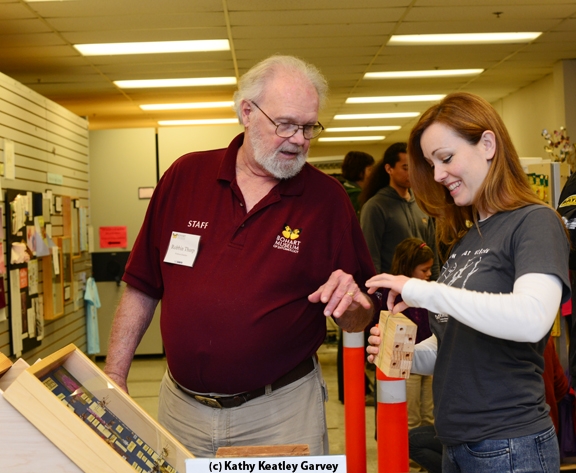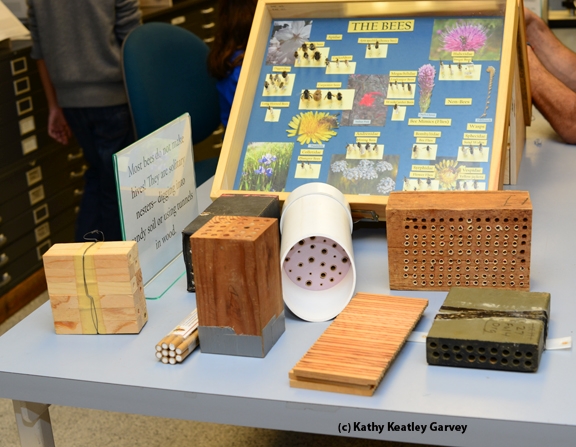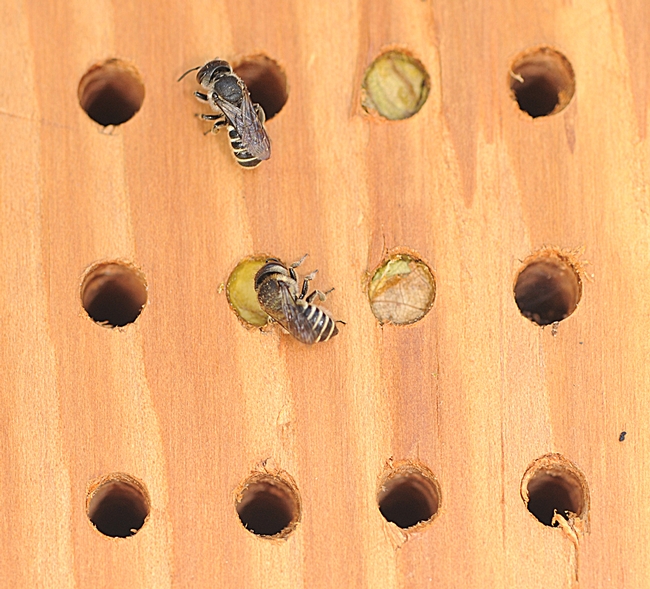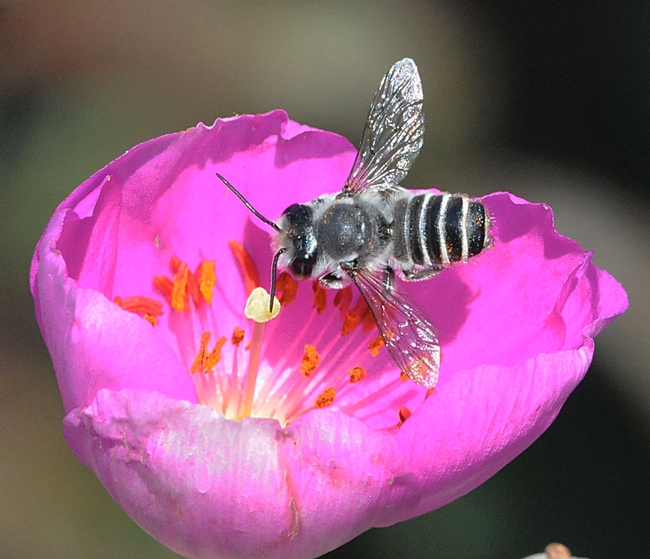
Posts Tagged: leafcutter bees
Go Native! Be a Native Bee 'Beekeeper'
If you're yearning to be a backyard beekeeper, "go native." "Go native" with native bees, that is. Many folks are building or buying bee condos to provide nesting sites for blue orchard bees (Osmia lignaria) and leafcutting bees (Megachile spp.). A bee condo is a block of wood drilled...

Leafcutting bees heading home to their condo. (Photo by Kathy Keatley Garvey)

Native pollinator specialist Robbin Thorp, emeritus professor of entomology at UC Davis, shows Danielle Wishon of the California Department of Food and Agriculture a bee condo. (Photo by Kathy Keatley Garvey)

Blue orchard bees on display at the Bohart Museum of Entomology. (Photo by Kathy Keatley Garvey)

Close-up of bee nesting sites shown March 2 at the Bohart Museum of Entomology. (Photo by Kathy Keatley Garvey)
Meet the New Tenant
You can't always choose your tenants. Sometimes they choose you. Take the case of our two bee condos, which are blocks of wood drilled with holes for native bee occupancy. One, with the smaller holes, is for leafcutter bees (Megachile spp.) The other, with the larger holes, is for blue orchard...

Webweaver spun a web and then crawled into the mason bee condo to occupy a hole. (Photo by Kathy Keatley Garvey)

Close-up of webweaving spider occupying space in the bee condo. (Photo by Kathy Keatley Garvey)
Ten Tenants
Ten tenants.That's how many tenants are occupying our wooden bee block, aka "bee condo."It's "home, sweet home" for leafcutting bees (Megachile spp.).Daily we see these native bees tear holes in leaves (red bud, rose, catmint, gold coin, rock purslane and nectarine) and gather the fragments to line...

Two leafcutting bees (Megachile spp.) at their bee condo. (Photo by Kathy Keatley Garvey)

Leafcutter bee sipping nectar from a rock purslane. (Photo by Kathy Keatley Garvey)
Canadian bees picking up the slack for locals
Solitary, hard working leafcutter bees are being imported from Canada to help pollinate seed alfalfa, making the crop profitable in the San Joaquin Valley, according to an article published today in Western Farm Press.
“Economically, seed alfalfa cannot compete with other crops without the leafcutter bees,” the story quoted Bob Sheesley, an alfalfa breeder who is a former UC Cooperative Extenion farm advisor and county director. Working together with honeybees, leafcutters boost alfalfa seed yield 250 pounds to 300 pounds per acre, Sheesley said.
The story was written by Dennis Pollock, who is now doing freelance ag writing after retiring from the Fresno Bee last year. For the leafcutter story, he spoke to UCCE farm advisor Shannon Mueller, who said leafcutter bees are more efficient pollinators than honeybees because they don't seem to mind being slapped in the face by the alfalfa flowers' reproductive structure as they forage for pollen.
Leafcutters won't be putting honeybees out of work, however. Honeybees are less susceptible to pesticides and are kept by professionals, unlike leafcutters, which farmers must manage and care for themselves.

Alfalfa seed.
